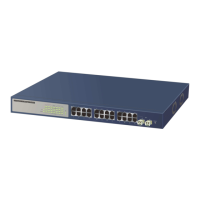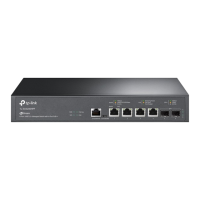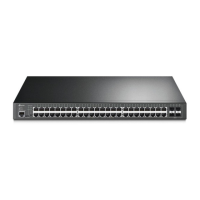51
To dene VLAN membership:
1. Click System > Bridging Config > VLAN >Membership > Membership. The VLAN Member Membership Page
opens:
Figure 74: VLAN Member Membership Page
The VLAN Member Membership Page contains the
following elds:
VLAN ID — Displays the user-dened VLAN ID.
VLAN Name — Displays the name of the VLAN
VLAN Type — Indicates the VLAN type. The possible
eld values are:
– Dynamic — Indicates the VLAN was dynamically
created through GARP.
– Static — Indicates the VLAN is user-dened.
– Default — Indicates the VLAN is the default VLAN.
Port — Indicates the port membership.
LAG — Indicates the LAG membership.
U — Indicates the interface is an untagged VLAN member. Packets forwarded by the interface are untagged.
T — Indicates the interface is a tagged member of a VLAN. All packets forwarded by the interface are tagged.
The packets contain VLAN information.
I — Includes the port in the VLAN.
E — Excludes the interface from the VLAN. However, the interface can be added to the VLAN through GARP.
R — Denies the interface VLAN membership, even if GARP indicates the port is to be added.
7.3.3 Dening VLAN Interface Settings
The VLAN Interface Settings Page contains elds for managing ports that are part of a VLAN. The Port Default VLAN ID (PVID)
is congured on the VLAN Interface Settings Page. All untagged packets arriving at the device are tagged with the port PVID.
To dene VLAN interfaces:
1. Click System > Bridging Cong > VLAN > Membership > Interface Settings. The VLAN Interface Settings Page
opens.
Figure 75: VLAN Interface Settings Page
The VLAN Interface Settings Page contains the following
elds:
Interface — Displays the port number included in the
VLAN.
Interface VLAN Mode — Displays the port mode. The
possible values are:
– General — Indicates the port belongs to VLANs, and
each VLAN is user-dened as tagged or untagged
(full IEEE802.1q mode).
– Access — Indicates a port belongs to a single
untagged VLAN. When a port is in Access mode, the
packet types which are accepted on the port cannot
be designated. Ingress ltering cannot be enabled or

